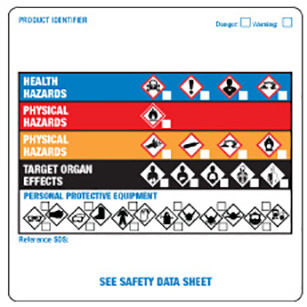In July 2014, President Obama issued Executive Order (EO) Number 13673, establishing a series of reporting and procedural requirements for federal contractors, inducing them to provide “Fair Pay and Safe Workplaces” to their employees. Some requirements are specific in the EO, while others were left for clarification by revisions to the Federal Acquisition Regulation (FAR), for contracts subject to these requirements. (I blogged about the EO here). None became effective in 2014, but instead they have awaited the FAR revisions. The revised FAR has been issued effective October 25, 2016, for appropriate contracts issued by the Department of Defense (DoD), General Services Administration (GSA) and National Aeronautics and Space Administration (NASA). The new requirements will be phased in, covering contracts and subcontracts for goods and services greater than $50 million immediately, and those greater than $500,000 effective April 25, 2017.
Read MoreAudit, Compliance and Risk Blog
New Rules For Labor Law Compliance By Federal Contractors
Posted by Jon Elliott on Thu, Sep 22, 2016
Tags: Employer Best Practices, OSHA, Employee Rights, EEOC, directors & officers
Constructive Dismissal Claims Due to Employer Conduct
Posted by STP Editorial Team on Thu, Jul 21, 2016
Managers who abuse employees and employers who tolerate such abuse may be subject to law suits and face significant financial penalties if their actions are found to constitute constructive dismissal.
Read MoreTags: Employer Best Practices, Employee Rights, Canadian, directors, directors & officers
Director Who Decided Not To Be Involved In Business, Still Liable For Employees’ Unpaid Wages
Posted by Ron Davis on Tue, Jul 19, 2016
Mensa Williams was listed as a director in the incorporation documents for Ambrosia Elite Corp., a company run by his brother, Admin. Ambrosia was incorporated in 2007, but did not actively conduct its retail clothing business until 2008. Ambrosia became insolvent in 2014, leaving its employees with unpaid wage claims. The unpaid wage claims were pursued under Ontario’s Employment Standards Act, 2000 (ESA), and when those claims were unsatisfied, an order to pay was issued to Ambrosia’s directors including Mensa Williams.
Read MoreTags: Business & Legal, Employer Best Practices, Employee Rights, directors, directors & officers
Applying A Hierarchy of Controls to Increase Workplace Safety
Posted by Jon Elliott on Tue, Jun 28, 2016
Every workplace poses at least some potential hazards to workers, but every set of hazards is unique. To effectively identify and manage those hazards, an organization should apply logical and systematic approaches. A number of related approaches are available. A few months ago I blogged about a proposal by the Occupational Safety and Health Administration (OSHA) to revise the Safety and Health Program Management Guidelines it promulgated back in 1989 (click here) – comments were due in February and OSHA is considering what to do next. OSHA’s proposal focused on overall program design, so included important structural considerations – who’s in charge, how are expectations communicated, etc.
Read MoreTags: Employer Best Practices, Health & Safety, OSHA, Employee Rights, EHS
OSHA Requiring Employers to Submit Injury and Illness information
Posted by Jon Elliott on Tue, Jun 14, 2016
The Occupational Safety and Health Administration (OSHA) requires most employers to prepare and maintain records of occupational injuries and illnesses as they occur (I&I Logs). OSHA also requires employers to post an annual I&I Summary in each “establishment” within their workplaces by February 1, summarizing that workplace’s I&Is during the previous calendar year. Delegated state-run programs impose comparable requirements. (I summarized these requirements here). Most of this information remains with employers and their employees, so it never gets used for analyses of workplace trends or to help OSHA evaluate areas where additional regulations might be most helpful.
Tags: Employer Best Practices, Health & Safety, OSHA, Employee Rights
The first significant outbreak of the mosquito-borne zika virus in the Americas was announced in Brazil in May 2015. Public health officials in the United States began to prepare responses, and have accelerated efforts in reaction to reports that the virus is spreading into U.S. territories, beginning with Puerto Rico and Florida and expanding northward. Late in April, the Occupational Safety and Health Administration (OSHA) and the National Institute for Occupational Safety and Health (NIOSH) entered the fray, by issuing joint “Interim Guidance for Protecting Workers from Occupational Exposure to Zika Virus.” The rest of this note summarizes that Guidance.
Read MoreTags: Employer Best Practices, Health & Safety, Employee Rights, EHS
The Occupational Safety and Health Administration (OSHA) requires employers to protect their employees against possible exposure to “bloodborne pathogens (BBPs).” OSHA’s Bloodborne Pathogen Standard prescribes protections for workers occupationally exposed to blood or other potentially infectious materials (OPIM). Healthcare workers are the most obvious beneficiaries, but emergency responders and others may also be regularly at risk to these exposures.
Read MoreTags: Employer Best Practices, Health & Safety, OSHA, Employee Rights, Environmental risks, EHS, Hazcom, pharmaceuticals
Employee Suspension: A Legitimate Disciplinary Measure?
Posted by STP Editorial Team on Thu, May 05, 2016
 If you are an employer and are considering using suspension as a disciplinary measure, be aware that the Supreme Court of Canada has indicated that employers do not have unfettered authority to withhold work from their employees and that legitimate business reasons must be shown in the context of any administrative suspension. Absent such reasons, an administrative suspension—even with pay—may be found to be a constructive dismissal.
If you are an employer and are considering using suspension as a disciplinary measure, be aware that the Supreme Court of Canada has indicated that employers do not have unfettered authority to withhold work from their employees and that legitimate business reasons must be shown in the context of any administrative suspension. Absent such reasons, an administrative suspension—even with pay—may be found to be a constructive dismissal.
Tags: Business & Legal, Employer Best Practices, Employee Rights, Canadian
The reality is that suicide rates in the U.S. have gone up considerably in recent years, claiming an average of 36,000 lives annually.1 While most suicides take place at, or near, a person’s home, suicide on the job is also increasing according to federal researchers. The Bureau of Labor Statistics reported that workplace suicides rose to 282 in 2013 reaching the highest level since the numbers have been reported by the occupational fatality census. In 2014, the suicide rate went down slightly to 271, which is the second highest level since the records have been kept. The annual average number of suicide deaths that occurred at work during the time period 2003 – 2014 is 237. Between 2003 and 2014 there were a total of 2,848 suicide deaths that occurred at work.2 The rise in suicide rates at work is even more significant when taken in the context that overall homicides in the workplace have been steadily decreasing since the mid-nineties.
Read MoreTags: Employer Best Practices, Employee Rights, Workplace violence
California Proposes Workplace Violence Prevention Requirements For Healthcare Facilities
Posted by Jon Elliott on Tue, Feb 09, 2016
Employees in the health care and social service sectors suffer workplace violence at much higher rates than in most other sectors, largely because of the higher risk from their patients and clients. In response to these risks, worker protection agencies and professional organizations have developed guidelines for workplace violence prevention in these sectors. Increasingly, worker protection laws and regulations are being revised to require these activities. Most recently, in December 2015 California has proposed to expand state requirements for security plans to include explicit workplace violence prevention programs.
Existing Requirements For Security Plans
Tags: Employer Best Practices, Health & Safety, OSHA, Employee Rights, California Legislation, EHS, Workplace violence









